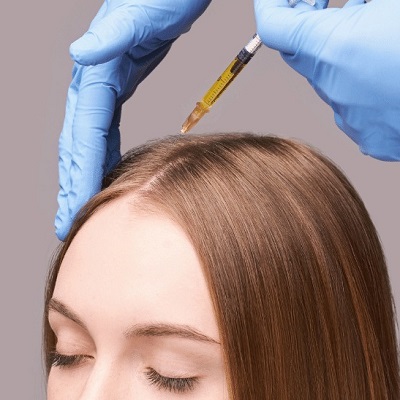Hair loss can be a distressing issue for many people, affecting self-esteem and confidence. With the rise of innovative treatments, one procedure that has gained significant popularity is PRP (Platelet-Rich Plasma) hair treatment. Especially in a cosmopolitan hub like Dubai, where appearance often plays a crucial role, PRP hair treatment has become a sought-after solution. This article aims to explore whether PRP Hair Treatment is worth the cost in Dubai, delving into its benefits, procedure, costs, and patient experiences.
What is PRP Hair Treatment?
Definition and Concept:
PRP hair treatment involves using the patient's own blood to stimulate hair growth. The process extracts platelet-rich plasma, which is then injected into the scalp to rejuvenate hair follicles.
How PRP Works:
Platelets are rich in growth factors, which are essential for healing and tissue regeneration. When injected into the scalp, they help to repair damaged hair follicles, stimulate new growth, and thicken existing hair.
Benefits of PRP Treatment:
The benefits of PRP hair treatment include natural-looking results, minimal downtime, and a non-surgical approach to hair restoration. It’s a preferred method for many due to its safety and effectiveness.
The Science Behind PRP Hair Treatment:
Platelet-Rich Plasma Explained:
Platelet-Rich Plasma (PRP) is derived from blood, consisting of a higher concentration of platelets than normally found. These platelets release growth factors that aid in tissue repair and regeneration.
Mechanism of Hair Growth Stimulation:
The growth factors in PRP stimulate the stem cells in hair follicles, promoting hair regrowth and improving the health of existing hair. This process enhances the hair's density and strength.
Clinical Studies and Results:
Numerous clinical studies have shown promising results with PRP treatments, indicating significant improvements in hair density and thickness. Patients often notice visible results within a few months of treatment.
PRP Hair Treatment Procedure:
Pre-Treatment Preparations:
Before undergoing PRP treatment, patients typically have a consultation to discuss their hair loss condition, medical history, and treatment expectations. Pre-treatment instructions may include avoiding certain medications and alcohol.
The Treatment Process:
The PRP treatment involves drawing a small amount of blood from the patient, processing it to concentrate the platelets, and injecting the PRP into the scalp. The entire procedure usually takes about an hour and is relatively painless.
Post-Treatment Care:
Post-treatment care is crucial for optimal results. Patients are advised to avoid washing their hair for a day, avoid strenuous activities, and follow any additional instructions provided by their practitioner.
Who is a Good Candidate for PRP Hair Treatment?
Ideal Candidates:
PRP hair treatment is ideal for individuals experiencing thinning hair or hair loss but still have functioning hair follicles. Both men and women can benefit from this treatment.
Conditions Treated by PRP:
PRP is effective for various types of hair loss, including androgenetic alopecia (male and female pattern baldness), alopecia areata, and other forms of thinning hair.
Consultation Process:
A thorough consultation with a hair restoration specialist is essential to determine if PRP is the right treatment. This process involves a detailed assessment of the patient's scalp and hair loss pattern.
Benefits of PRP Hair Treatment:
Non-Surgical Solution:
One of the primary advantages of PRP hair treatment is that it’s a non-surgical procedure, which means there are no incisions or stitches involved.
Natural and Safe:
Since PRP uses the patient's own blood, the risk of allergic reactions or complications is minimal, making it a natural and safe option for hair restoration.
Long-Term Results:
With regular sessions and proper maintenance, PRP can offer long-term results, improving the overall health and appearance of the hair.
Potential Side Effects and Risks:
Common Side Effects:
Common side effects of PRP hair treatment include mild pain at the injection site, scalp tenderness, and minor swelling or redness, which typically subside within a few days.
Rare Complications:
Though rare, complications can include infection or injury to blood vessels. Choosing an experienced practitioner can help minimize these risks.
How to Minimize Risks:
Following pre- and post-treatment instructions carefully and selecting a reputable clinic with experienced professionals are key to minimizing any risks associated with PRP hair treatment.
FAQs:
Common Questions Answered
- How long does it take to see results from PRP hair treatment? Results typically become noticeable after 3-6 months, with continued improvement over a year.
- Is PRP hair treatment painful? Most patients report minimal discomfort during the procedure, often described as a mild pinching sensation.
- How many sessions are needed for optimal results? Generally, 3-4 sessions are recommended, spaced a month apart, followed by maintenance treatments every 6-12 months.
- Can PRP hair treatment be combined with other treatments? Yes, PRP can be effectively combined with treatments like minoxidil or laser therapy for enhanced results.
- Is there any downtime after PRP hair treatment? There is minimal downtime, with most patients resuming normal activities immediately after the procedure.
Conclusion
PRP Hair Treatment Cost is a promising, non-surgical solution for those experiencing hair loss. With its ability to stimulate natural hair growth using the body's own healing mechanisms, it offers a safe and effective option for many. While the cost in Dubai can be significant, the benefits often justify the investment, making it a worthy consideration for those seeking to restore their hair and confidence.





Comments